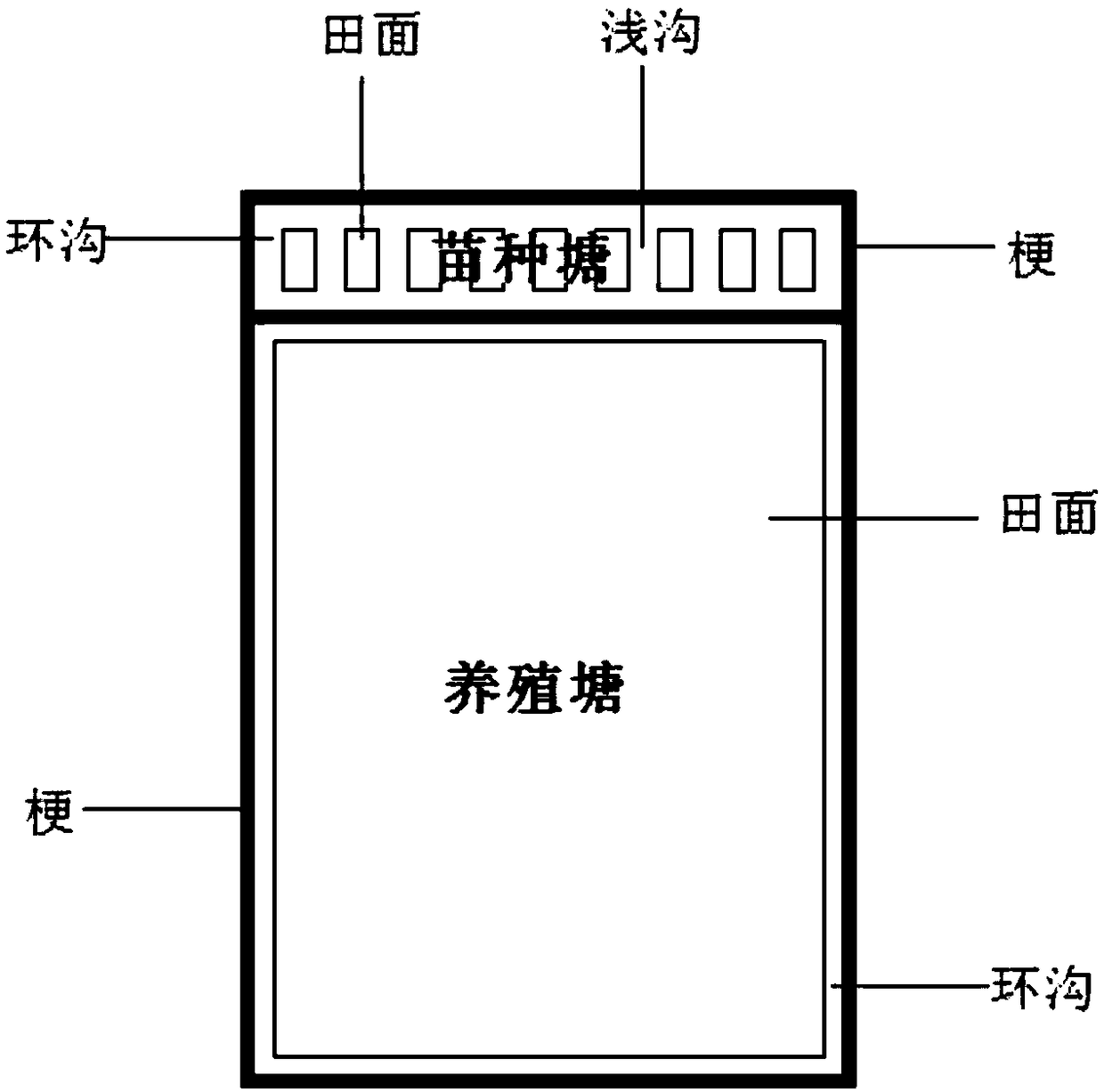A new planting and breeding method for shrimp and rice rotation
A technology of seedlings and shrimp seedlings, which is applied in the field of new-type shrimp-rice rotation cultivation, can solve the problems of reducing economic benefits, difficulty in centralized marketing, and affecting rice production, so as to increase breeding benefits, avoid disease outbreaks, and reduce breeding risks. Effect
- Summary
- Abstract
- Description
- Claims
- Application Information
AI Technical Summary
Problems solved by technology
Method used
Image
Examples
Embodiment 1
[0035] Taking 40 mu as a breeding unit, dig out an 8-mu seedling pond and a 32-mu breeding pond according to the ratio of the area ratio of the seedling pond to the breeding pond is 1:4. The specific operation steps are as follows:
[0036] 1. Construction of seedling ponds and breeding ponds
[0037] 1.1 Construction of seedling ponds
[0038] Before the start of planting, dig a ring ditch with a depth of 1m, a bottom width of 4m, and a slope of 30 degrees to 45 degrees along the paddy field. The dug out soil is used as a ridge. ~3m. Then dig a shallow ditch every 2m on the field surface with a depth of 0.5m, a bottom width of 1.5m, and a slope of 45 degrees. Membrane escape, the height of the escape membrane is 0.4m. A certain amount of water hyacinths are put into the ring ditch, and the area of the water hyacinths in the water does not exceed 30% of the water surface. The original water level of the seed pond is 20-30cm lower than the ridge surface.
[0039] 1.2 Co...
PUM
 Login to View More
Login to View More Abstract
Description
Claims
Application Information
 Login to View More
Login to View More - R&D
- Intellectual Property
- Life Sciences
- Materials
- Tech Scout
- Unparalleled Data Quality
- Higher Quality Content
- 60% Fewer Hallucinations
Browse by: Latest US Patents, China's latest patents, Technical Efficacy Thesaurus, Application Domain, Technology Topic, Popular Technical Reports.
© 2025 PatSnap. All rights reserved.Legal|Privacy policy|Modern Slavery Act Transparency Statement|Sitemap|About US| Contact US: help@patsnap.com


